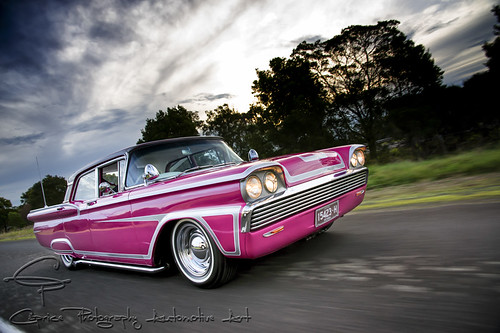These motors draw their energy from a manganese-primarily based lithium-ion battery pack producing an open circuit voltage of about four hundred volts. For starters, Lithium-ion batteries offer a better open circuit voltage, that means they can take extra juice flowing by them than traditional batteries. Additionally they do not endure from the tendency amongst rechargeable batteries to charge much less and less over time -- in any other case known because the "memory impact." And they have a low self-discharge charge which means they'll stay totally charged longer than different varieties of rechargeable batteries when they're not in use. However, the Karma's battery pack will operate the car for a variety of about 50 miles (80.5 kilometers) below best circumstances -- remember, velocity, terrain and driving model all play a role in depleting battery energy to a greater or lesser degree -- that means no emissions for those miles. The Fisker Karma is said to be destined for driveways later in 2009; nevertheless, whether or not it can become a common sight on the highway or just another chapter within the historical past of the vehicle remains to be seen.
However, he also said that the know-how has been tried and examined for reliability. During a short drive, like within the case of native errands and most daily commute driving, the engines simply do not reach that crucial working temperature. For nearly all cars, the engine and emissions management system must be at a selected operating temperature to perform at its peak effectiveness. For hybrid automotive makers, electric motors are good for decreasing emissions and maximizing mileage. Wireless CarPlay setup was very simple as anticipated, with the same old prompts showing after connecting my telephone to the system through Bluetooth, and from that time on connecting routinely and seamlessly every time I started the automotive. One simple instance is the Karma's auto begin/cease function. Depending on inputs to the HCU, the Karma's engine will both shut itself down at lengthy site visitors lights, or keep working if mandatory. In other words, the most gas is required to supply the torque necessary to get the car rolling.
Once a automobile is rolling, the vitality crucial to overcome the preliminary inertia becomes less and fewer, and due to this fact, much less and fewer energy (gasoline) is used. This excessive voltage, especially in sequence hybrid vehicles, is important to provide the electric motors with enough oomph to get the automobile rolling. Nearly the entire extras, minus the $4,500 purple paint, are crucial if you want to stroll out the door with a automobile matching the TLX Type S’ customary function set. While there are extra PHEVs set to go on the market than ever earlier than, Fisker has added a number of twists to differentiate the Karma. Fisker spokesman Russell Datz estimated charging the batteries within the Fisker Karma would cost the gas equal of about 25 cents per gallon. It's formed from one large, curved piece of solar glass that helps recharge the batteries on sunny days. Certainly one of some great benefits of utilizing an electric motor to power a car is that they produce maximum torque the very prompt they start working. Electric motors produce their maximum torque immediately. So, hybrids have the potential to supply a lot of power -- more than traditional combustion engines in some instances -- however they still need the engineering improvements that the normal engines have already got in place to boost their power.
 Most hybrid automobiles use a linked collection of smaller batteries, round 1.2 volts each, to supply a mixed voltage of anywhere from 300 to 650 volts total. The added traction of all-wheel drive can also be obtainable in vehicles that aren't SUVs. But traction management uses so lots of the same programs and sensors as other authorized gadgets require that F1 officials merely couldn't inform who was cheating by using traction control. Readers will have to produce their very own mad cackling while reading how traction management works. Instead, drivers should look to how power methods are paired and the way they work together. The software program, housed in the hybrid control unit (HCU), manages the battery and engine to acquire the most effective results from both systems. The photo voltaic roof on the Karma will add an estimated four to 5 miles (6.4 to eight kilometers) of battery power per week. And this programmed intelligence is what permits the Karma to be merely more than a battery-powered car. Like other hybrids, the Karma takes benefit of regenerative braking to assist cease the automobile and make the most of the kinetic power potential of the automotive during a coast or brake situation.
Most hybrid automobiles use a linked collection of smaller batteries, round 1.2 volts each, to supply a mixed voltage of anywhere from 300 to 650 volts total. The added traction of all-wheel drive can also be obtainable in vehicles that aren't SUVs. But traction management uses so lots of the same programs and sensors as other authorized gadgets require that F1 officials merely couldn't inform who was cheating by using traction control. Readers will have to produce their very own mad cackling while reading how traction management works. Instead, drivers should look to how power methods are paired and the way they work together. The software program, housed in the hybrid control unit (HCU), manages the battery and engine to acquire the most effective results from both systems. The photo voltaic roof on the Karma will add an estimated four to 5 miles (6.4 to eight kilometers) of battery power per week. And this programmed intelligence is what permits the Karma to be merely more than a battery-powered car. Like other hybrids, the Karma takes benefit of regenerative braking to assist cease the automobile and make the most of the kinetic power potential of the automotive during a coast or brake situation.












0 komentar:
Posting Komentar